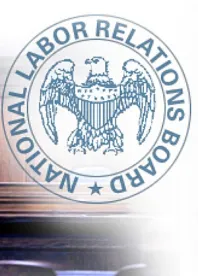For thirty-two years, it has been a settled proposition that an employer may, upon the expiration of a contract, refuse to continue to negotiate with a “mixed-guard” union that represents its security guards. Continuing its long path of upsetting established precedent, on June 9, 2016, the National Labor Relations Board (“NLRB” or “Board”) reversed this and made clear that going forward a voluntary recognition of such a mixed-guard unit will require continued recognition just like any other bargaining unit. Loomis Armored US, Inc., 364 N.L.R.B. No. 23 (June 9, 2016).
A “mixed-guard union” is a labor organization that represents both security guards and other nonguard employees. Section 9(b)(3) of the National Labor Relations Act (“NLRA” or the “Act”) expressly prohibits the Board from certifying mixed-guard unions as the collective bargaining representative for security guards. However, the Board has long held that an employer may voluntarily recognize a mixed-guard union as the representative of its employees.
In 1984, in Wells Fargo, the Board held that if an employer voluntarily recognizes a mixed-guard union, it may later withdraw recognition from the union for any reason as long as there was no contract in effect. Wells Fargo Corp., 270 N.L.R.B. 787 (1984). The Board’s holding was based in part on the legislative intent behind Congress enacting Section 9(b)(3) of the Act, which was aimed “to shield employers of guards from the potential conflict of loyalties arising from the guard union’s representation of nonguard employees or its affiliation with other unions who represent nonguard employees.”
In Loomis, the Board completely overruled Wells Fargo. The Board held that once an employer voluntarily recognizes a mixed-guard union, it may only withdraw recognition if the union loses majority support among the employees. This rule applies to all other bargaining units, and the Board reasoned that the same rule should apply to guards as well – – placing an emphasis on the importance of preserving “stability in collective bargaining,” a tenet of the NLRA.
The Board dismissed the presence of any inconsistencies between its holding and the “conflict of loyalties” that concerned Congress when enacting Section 9(b)(3). The Board explained that employers recognizing mixed-guard unions will trade their ability to remove the union with whatever advantage recognizing the union brings the employer: “An employer of guards thus may conclude that the potential conflict that concerned Congress either is not present or is outweighed by the potential advantages of entering into a collective-bargaining relationship with a mixed-guard union. And, in fact, a significant number of employers have availed themselves of this option.” (Of course, those employers voluntarily recognized when they knew they could withdraw that recognition without challenge in the future.)
Importantly, though, the Board refused to apply its holding retroactively. Therefore, the Board’s rule from Wells Fargo will apply to all past and current cases, and the new Loomis holding will only apply to future cases.
Board Member Miscimarra dissented from the majority, arguing that the Board’s holding in Wells Fargo is more in line with the Congressional intent behind Section 9(b)(3) of the Act. He stated that “[i]f Congress deemed it objectionable to have guards represented by ‘certified’ mixed guard/nonguard unions, such an arrangement would appear equally objectionable when provided by a mixed guard/nonguard union that received voluntary recognition.” Thus, Member Miscimarra found that it would be most consistent with Congressional intent to never allow mixed-guard unions to represent guards. Still, he acknowledged some countervailing reasons for permitting voluntary recognition of mixed-guard unions, such as the need for unions to expand their membership. Ultimately though, Member Miscimarra held that the Board in Wells Fargo applied Section 9(b)(3) in the “most appropriate manner.” He further concluded that after thirty-two years of the Wells Fargo rule, the Board lacked compelling reasons to reverse the rule.
This case is very important for companies that employ security guards. Employers that currently recognize a mixed-guard unit/union must understand their continuing obligation to recognize the union, even after contract expiration – – a change which may materially impact bargaining leverage in future negotiations. Moreover, employers with non-union security guards should also be cognizant of the shift in the law, which may limit the likelihood of future voluntary recognitions. If a mixed-guard union seeks voluntary recognition, the employer should be aware that agreeing to that request will now bind the employer unless and until the union loses majority support.




 />i
/>i

